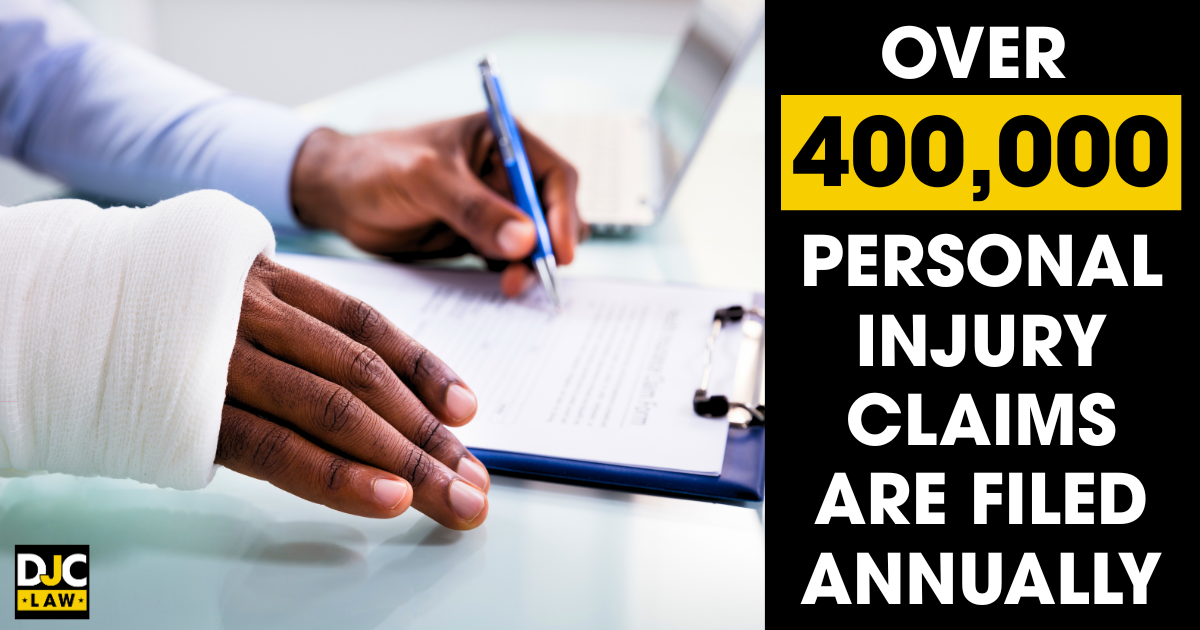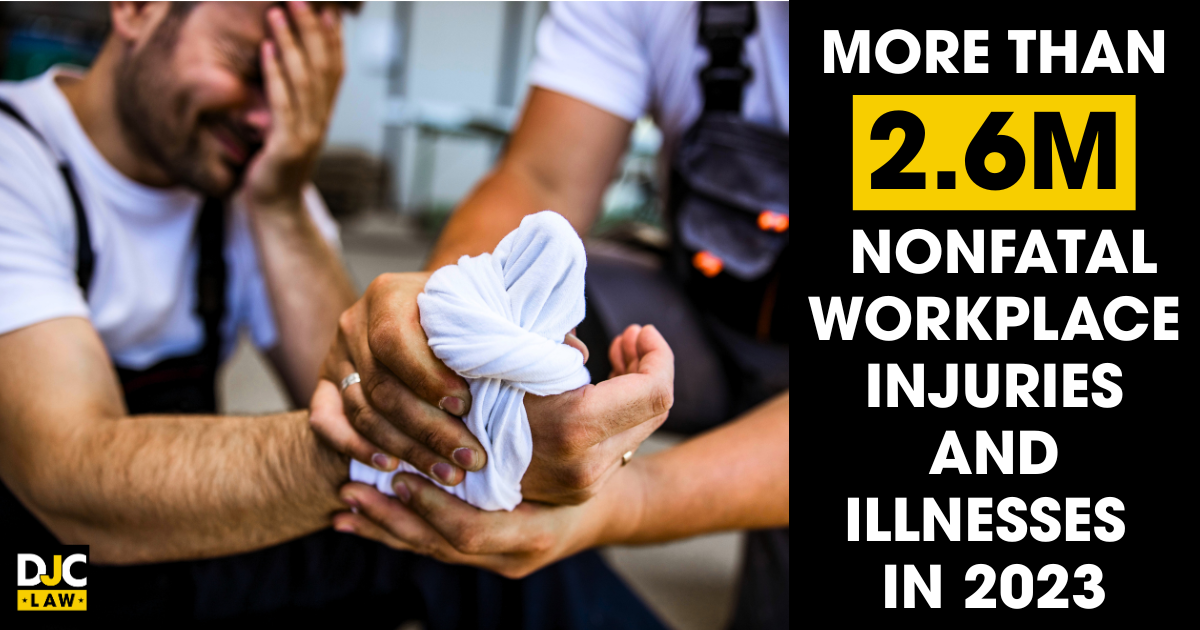
Negligence is the foundation of any successful personal injury claim. Without the ability to prove negligence after an accident, you cannot claim the compensation you’re entitled to.
But what is negligence? That’s where laws differ across the United States, with states relying on different models to determine what counts as negligence and the threshold your case must meet to become entitled to financial compensation.
According to the U.S. Department of Justice, over 400,000 personal injury claims are filed annually. Right now, personal injury claims are soaring, with statistics from the United States Courts platform reporting that these types of claims have surged by 78% from 2023 to 2024.
If you’ve been injured and are planning to file a personal injury lawsuit or make a claim, an experienced Austin personal injury lawyer can guide you through the complex negligence laws. Here's what you must know about the nation’s negligence laws.

Key Takeaways
- Negligence is defined as the failure to behave with the level of care expected of a hypothetical reasonable person under the same circumstances.
- Proving negligence requires you to demonstrate that there was a duty of care and that the duty of care was breached, thus resulting in damages directly caused by the defendant.
- Each state determines its own negligence laws, with three major categories of pure contributory negligence, pure comparative negligence, and modified comparative negligence.
- South Dakota is the sole state that differs from the rest, operating on a slight and gross negligence comparison model.
- The burden of proof is on the plaintiff to prove negligence and the damages caused by that negligence. Evidence that might be used includes photos, videos, eyewitness statements, accident reports, and expert witness testimony.
- Common defenses against negligence claims include claiming shared fault, expired statute of limitations, lack of duty of care, and questions over causation.
- The best way to manage negligence claims is to hire an attorney in the aftermath of your accident to ensure that your legal rights are protected and you build the strongest possible case.
Defining Negligence: Legal Foundations
According to Cornell Law School, negligence is the failure to behave with a level of care expected of a reasonable person in the same situation. Negligence can be defined as actions taken or actions not taken, but the concept of negligence revolves around whether the at-fault party had a duty of care.
It’s the fundamental concept behind tort law. It allows individuals and businesses to be held legally accountable for any actions they did or didn’t take that resulted in harm to others. Proving negligence means fulfilling four key elements:
- Proving that the defendant had a legal duty of care to an accident victim.
- Showing that the defendant subsequently breached that duty.
- The breach of duty of care resulted in harm to the plaintiff.
- Actual losses were suffered through the actions or inactions of the defendant.
No matter where you are in the U.S., these four principles always apply when deciding whether somebody acted negligently.
Categories of Negligence Laws
The foundations of what is negligence remain the same in the form of the four elements of duty of care, breach of duty of care, causation, and damages, but every state has different categories of negligence to decide whether the plaintiff is entitled to receive a financial settlement.
Typically, there are three categories:
- Pure contributory negligence
- Pure comparative negligence
- Modified comparative negligence
These negligence law categories have nothing to do with whether someone acted negligently, but how damages are shaped and whether the plaintiff can receive damages. Let’s examine each of these three categories to see how they work.
Exploring Contributory Negligence
Contributory negligence is the strictest type of negligence law, and also the least common. It means that if you’re found to be even 1% at fault for what happened, you can’t recover any damages.
Otherwise known as pure contributory negligence, only the following jurisdictions still use this model:
- Alabama
- Maryland
- North Carolina
- Virginia
- District of Columbia
Understanding Comparative Negligence
Pure comparative negligence laws allow damages to be awarded even if the plaintiff was partially at fault for the incident. Under the pure comparative negligence system, you can receive damages even if you’re 99% responsible for the accident because compensation is defined by the negligence attributable to the defendant.
States like California and New York use this system, and any settlement will be reduced by the extent of the plaintiff's negligence. For example, if you’re 40% responsible for your accident under the Arizona pure comparative negligence system, you’d see your settlement slashed by 40%.
The Role of Modified Comparative Negligence
Modified comparative negligence combines the concept of shared responsibility with the pure contributory negligence system by assigning boundaries of fault as determined by the plaintiff's contributory negligence and the defendant's negligence. Cross the boundary and you’ll be barred from receiving compensation entirely.
Typically, most states use a 50% or 51% bar rule, where if you’re 50-51% or more responsible for an accident, you’ll lose the right to recover compensation. Most states use this system because it’s believed that it’s the fairest system while also reducing the amount of frivolous claims entering the legal pipeline.
Of course, if you fall under the barrier, your compensation may still be reduced accordingly, such as under the Tennessee modified comparative negligence system.
State-Specific Negligence Laws Overview
Each state has the right to define its own system. Although modified comparative negligence laws are the standard most states follow, no laws exist restricting states on how they deal with the issue of negligence and damages entitlement.

That has an enormous impact if you’re involved in an accident. With the U.S. Bureau of Labor Statistics reporting more than 2.6 million nonfatal workplace injuries and illnesses in 2023, where you live will decide whether you’re entitled to receive anything at all.
To illustrate how negligence laws are applied in practice, here’s a deep dive into how different states approach the issue.
California’s Unique Approach to Negligence
California uses a pure comparative negligence system. In the Golden State, anyone can claim compensation even if they’re 99% at fault for their accident. Without these boundaries, anyone can make a claim and receive damages as long as they’re not wholly responsible for an accident.
It’s one of the most plaintiff-friendly systems in the country. Proponents of the system claim that the system ensures that fault shouldn’t place a hard cap on damages, as long as the defendant bears some liability.
New York’s Comparative Negligence Framework
The New York pure comparative negligence system allows anyone to make a claim even if they’re mostly to blame for an accident. Like in California, your settlement package will be reduced by the percentage of the negligence attributed to you under its pure comparative fault laws.
Interestingly, New York’s courts are known for regularly holding multiple defendants to account, including any non-parties who might have contributed to an accident in some way. Again, it’s one of the most plaintiff-friendly systems in the union.
Texas and the 51% Rule Explained
Texas relies on the modified comparative negligence model and uses the 51% bar rule when determining whether someone can receive financial recompense for an accident. Under the 51% bar rule, all plaintiffs must demonstrate that they were less than 51% responsible for an accident to receive compensation.
The system prefers to focus on the balance of probabilities. In other words, accident victims may still receive compensation if the other party's fault is greater than yours. Without that the plaintiff's recovery of compensation becomes an impossible task.
Florida’s Distinct Negligence Regulations
Florida was once a pure comparative negligence state like California and New York, but that system has changed. In March 2023, Florida’s state legislature signed House Bill 837 to make it a modified comparative negligence state to help cut down on the amount of litigation in the Sunshine State.
It was the single biggest shake-up of negligence law in the state, bringing it into line with the majority of states. Florida opted to use the 50% bar rule, where the plaintiff's fault must be less than 50% for an accident claim to receive compensation.
Alaska’s Variance in Negligence Law
Alaska is one of the few states operating on a pure comparative negligence model. Despite being a small jurisdiction by population, Alaska still has a relatively low amount of litigation compared to other states using the same system.
Like California, Alaska allows anybody to make a claim if they’re less than 100% responsible for an accident. Your settlement will be reduced by the specific percentage of the responsibility you assume, which is the same system as the Louisiana pure comparative negligence model and a handful of other states.
Notable Differences in South Dakota’s Negligence Laws
South Dakota is the sole exception in the country because it uses a unique system that doesn’t fit into either pure or modified comparative negligence models. Instead, plaintiffs can recover damages only if their negligence is “slight” relative to the defendant’s. This is known as a subjective slight/gross fault comparison.
What does this mean in practice? In short, nobody is quite sure, including the legal community, because fault percentages aren’t used in this state. The concept of slight isn’t strictly defined, and so personal injury cases tend to be highly unpredictable in this state. It’s why campaigners have fought for a long time to reform the system here.
| State | Negligence Law Type | Plaintiff Recovery Rule |
|---|---|---|
| Alabama | Contributory | no compensation allowed if the plaintiff is even 1% at fault |
| Alaska | Pure Comparative | uses a pure comparative negligence system; anyone can claim compensation even if they're 99% at fault |
| Arizona | Pure Comparative | uses a pure comparative negligence system; anyone can claim compensation even if they're 99% at fault |
| Arkansas | Modified Comparative | no recovery if 50% or more at fault |
| California | Pure Comparative | uses a pure comparative negligence system; anyone can claim compensation even if they're 99% at fault |
| Colorado | Modified Comparative | no recovery if 50% or more at fault |
| Connecticut | Modified Comparative | no recovery if 51% or more at fault |
| Delaware | Modified Comparative | no recovery if 51% or more at fault |
| District of Columbia | Contributory | no recovery if even 1% or more at fault |
| Florida | Modified Comparative | no recovery if 50% or more at fault |
| Georgia | Modified Comparative | no recovery if 50% or more at fault |
| Hawaii | Modified Comparative | no recovery if 51% or more at fault |
| Idaho | Modified Comparative | no recovery if 50% or more at fault |
| Illinois | Modified Comparative | no recovery if 51% or more at fault |
| Indiana | Modified Comparative | no recovery if 51% or more at fault |
| Iowa | Modified Comparative | no recovery if 51% or more at fault |
| Kansas | Modified Comparative | no recovery if 50% or more at fault |
| Kentucky | Pure Comparative | uses a pure comparative negligence system; anyone can claim compensation even if they're 99% at fault |
| Louisiana | Pure Comparative | uses a pure comparative negligence system; anyone can claim compensation even if they're 99% at fault |
| Maine | Modified Comparative | no recovery if 50% or more at fault |
| Maryland | Contributory | no recovery if even 1% or more at fault |
| Massachusetts | Modified Comparative | no recovery if 51% or more at fault |
| Michigan | Modified Comparative | no recovery if 51% or more at fault |
| Minnesota | Modified Comparative | no recovery if 51% or more at fault |
| Mississippi | Pure Comparative | uses a pure comparative negligence system; anyone can claim compensation even if they're 99% at fault |
| Missouri | Pure Comparative | uses a pure comparative negligence system; anyone can claim compensation even if they're 99% at fault |
| Montana | Modified Comparative | no recovery if 51% or more at fault |
| Nebraska | Modified Comparative | no recovery if 50% or more at fault |
| Nevada | Modified Comparative | no recovery if 51% or more at fault |
| New Hampshire | Modified Comparative | no recovery if 51% or more at fault |
| New Jersey | Modified Comparative | no recovery if 51% or more at fault |
| New Mexico | Pure Comparative | uses a pure comparative negligence system; anyone can claim compensation even if they're 99% at fault |
| New York | Pure Comparative | uses a pure comparative negligence system; anyone can claim compensation even if they're 99% at fault |
| North Carolina | Contributory | no recovery if even 1% or more at fault |
| North Dakota | Modified Comparative | no recovery if 50% or more at fault |
| Ohio | Modified Comparative | no recovery if 51% or more at fault |
| Oklahoma | Modified Comparative | no recovery if 51% or more at fault |
| Oregon | Modified Comparative | no recovery if 51% or more at fault |
| Pennsylvania | Modified Comparative | no recovery if 51% or more at fault |
| Rhode Island | Pure Comparative | uses a pure comparative negligence system; anyone can claim compensation even if they're 99% at fault |
| South Carolina | Modified Comparative | no recovery if 51% or more at fault |
| South Dakota | Slight/Gross Negligence | uses a subjective slight/gross negligence rule—plaintiffs can recover only if their fault is "slight" compared to the defendant’s (personal injury cases are often highly unpredictable |
| Tennessee | Modified Comparative | no recovery if 50% or more at fault |
| Texas | Modified Comparative | no recovery if 51% or more at fault |
| Utah | Modified Comparative | no recovery if 50% or more at fault |
| Vermont | Modified Comparative | no recovery if 51% or more at fault |
| Virginia | Contributory | no recovery if even 1% or more at fault |
| Washington | Pure Comparative | uses a pure comparative negligence system; anyone can claim compensation even if they're 99% at fault |
| West Virginia | Modified Comparative | no recovery if 51% or more at fault |
| Wisconsin | Modified Comparative | no recovery if 51% or more at fault |
| Wyoming | Modified Comparative | no recovery if 51% or more at fault |
How Negligence is Evaluated in Personal Injury Cases
Personal injury lawyers, insurers, and courts must decide whether a claim of negligence is legitimate by evaluating all available evidence and then comparing it against the standard for negligence.
It’s the first thing any reasonable personal injury attorney will do because there’s no grounds for claiming damages if this can't be proved. Additionally, the evidence is used to decide the percentage of fault assigned to each party. It’s this that typically causes considerable disputes in personal injury cases.
The Importance of Evidence and Liability
The burden of proof is on the plaintiff to show that the other party acted in a negligent fashion. It’s their job to gather evidence, build their case, and then present it to demonstrate that their case fulfills the elements of duty, breach, causation, and damages.
Types of evidence that come into play include:
- Medical reports
- Expert witness testimony
- Eyewitness statements
- Official accident reports
- Accident scene photos
- Security camera footage
- Dashcam footage
- Property damage reports
As with any legal case, you can never have too much evidence. In negligence cases, the concept of the “preponderance of the evidence” standard is used. In layman’s terms, this means it’s a matter of proving that the defendant was negligent based on the balance of probabilities.
Understanding Duty of Care in Various States
Duty of care is the first element that must be proven in a negligence case. It’s the duty of someone to avoid causing harm to others. For example, if you’re driving a car, you have the legal duty to obey the rules of the road and drive safely to protect others.
States all acknowledge and recognize the duty of care, but the standard that applies depends on the state.
For example, property owners have a legal duty to protect people on their properties. California tends to impose heavy duties on property owners for visitors, licensees, and even trespassers. In contrast, North Carolina opts to limit the duties of property owners, thus making these claims more challenging to prove.
Likewise, some states focus on different contexts. Massachusetts has several laws that define the duty of care in contexts like transportation and commercial property settings. Although the duty of care can differ, most states are relatively similar when the broader view is taken into account.
One common area of agreement is when it comes to professional services, like doctors and lawyers. These standards for the duty of care are higher, which can make claims against professionals more straightforward. According to John Hopkins, more than 250,000 people die due to medical malpractice each year, which is why high-value claims are a staple of the industry in practically every state.

Common Defenses Against Negligence Claims
Defendants might use various defenses in negligence claims. Look closely enough, and you’ll notice that all of the most common defenses weaken claims by addressing one or more of the four elements that make up negligence.
Here’s a breakdown of some of these defenses that you might face when making a claim:
- Shared Fault – States where pure contributory negligence laws are in force often see defendants claiming shared fault because it can get a claim totally dismissed. Even in states using contributory negligence models, allegations of shared blame can push fault over the 50 or 51% threshold to destroy claims.
- Risk Assumption – Defendants might argue that the plaintiff knew the risk of injury when partaking in a particular activity by participating in it in the first place.
- No Duty – States with relatively lax rules on duty of care may see arguments that no duty of care was owed in the first place.
- Causation Issues – Another strategy is to attack the element of causation. A defendant might argue that their actions weren’t the cause of a person’s injuries, such as they had a pre-existing condition or another event out of their control occurred.
- Statute of Limitations – All personal injury cases are subject to a state’s established statute of limitations. Claiming that a personal injury lawsuit wasn’t filed on time is a common way to eliminate claims.
In an ideal scenario, these defenses might see claims dismissed for one reason or another. However, simply shifting partial fault onto the plaintiff can save the defendant tens of thousands of dollars in high-value cases.
The Impact of State Negligence Laws on Legal Outcomes
State negligence laws can have a substantial impact on legal outcomes. The negligence laws a state uses will always be the biggest influencer, but legal precedent and judge/jury attitudes also shape whether compensation is awarded.
That’s why hiring an experienced personal injury attorney in your state is vital. They know the system and can use their wisdom and experience not only to navigate the legal landscape but also to set reasonable expectations.
Let’s investigate how different state negligence laws have impacted legal outcomes in the past and what they mean for your case.
Case Studies Demonstrating State Variances
Due to the impact of state variances, a case that results in a settlement package in one state may be dismissed out of hand in another. It’s a challenging situation for plaintiffs and legal professionals alike because the concept of fairness doesn’t form the basis for a legal claim.
It’s why many states, such as South Dakota and Maryland, have seen criticism in the past for their negligence laws because they’ve left thousands of plaintiffs out of pocket, even when the defendant was clearly to blame.
We’ll use four different examples to examine how these variances come into play under different models.
Maryland
Maryland has strict contributory negligence laws, meaning that any fault on the part of the plaintiff will bar them from receiving compensation.
This was born out in November 2023 when a driver struck and killed two children in Prince George’s County, Maryland. The two children were on their way to school and crossing a street using a crosswalk at the time. Although the driver clearly violated the law, the case could still have resulted in no compensation for the family if the children did anything to contribute.
Luckily, this was one such case that led to a positive outcome because the defendant admitted to a charge of criminal negligence as part of a plea deal that would see them face just four months in jail. However, this admission opens the door for a credible wrongful death lawsuit.
California
Cyclist Ty Whitehead received severe injuries while out on an organized ride in the city of Oakland after hitting a pothole. Although Whitehead signed a liability waiver, the California Supreme Court ruled that these waivers don’t remove the obligation for municipalities to keep their roads safe.
Under California’s pure comparative negligence system, this will allow Whitehead to recover damages, regardless of how much responsibility he ultimately bears. It’s also an example of the Golden State’s plaintiff-friendly system.
Texas
Texas’ comparative negligence system and 51% bar rule allow anyone to receive damages if they’re less than 51% responsible for an accident. In 2023, Genesis Monita received second-degree burns after spilling hot barbecue sauce on herself while dining in San Antonio at the Bill Miller Bar-B-Q restaurant.
Although Monita spilled the barbecue sauce on herself, which implies some fault, she still received $2.7 million after her legal team argued that the sauce was overheated, the container was inadequate, and there were zero temperature warnings.
However, the jury decided to assign 100% responsibility to the defendant, despite Monita’s actions, meaning she received the full amount in compensation.
South Dakota
In South Dakota, their slight/gross negligence system is a constant source of confusion since it’s a highly subjective standard in practice. The case of Weiland v. Bumann illustrates this.
In 2017, Highway Patrol Officer Patrick Baumann made a U-turn while his view was obstructed and was hit by Todd Weiland. Neither were injured at the time, but two years later, Weiland sought medical treatment, which resulted in a personal injury lawsuit in 2020.
A jury found Weiland partially negligent because he was speeding slightly at the time. Despite this shared liability, which would have barred compensation under a pure contributory negligence system, the jury decided that the negligence was slight and awarded Weiland over $18,000.
Currently, Baumann is appealing this ruling.
Recent Trends and Reforms in Negligence Law
Negligence laws constantly change as states re-examine their systems and determine whether they’re fit for purpose. In 2023, Florida switched to the modified comparative negligence model, bringing it into lockstep with most states.
Every time these laws change, they alter the game for accident victims and force lawyers to alter how they approach these cases. That’s why staying updated on what’s going on and what upcoming rule changes mean for plaintiffs and defendants alike is crucial.
Emerging Legislative Changes Across States
The biggest trend is states doing what they can to limit high-value settlements awarded to plaintiffs when they share some of the blame. Florida’s move to a modified comparative negligence system isn’t the only example. States like Texas and Missouri have also been expanding caps on non-economic damages, such as pain and suffering damages.
We’re also seeing some states expanding their negligence laws to increase liability in several sectors, such as construction and transportation. These states tend to be the ones that are already plaintiff-friendly. For example, courts in California have been holding employers responsible for the negligent actions of their employees.
Additionally, Washington and Illinois have initiated reforms to increase the duty of care property owners owe to visitors on their properties. In both cases, reforms and case precedent have been used to force property owners to foresee potential harm to visitors.
However, one of the most intriguing moves applies to next-generation technology. As AI-controlled devices and autonomous vehicles become a part of their lives, some states have adjusted negligence laws to adapt to this new reality. Legislatures in Nevada and California are changing the law to clarify the negligence standards that apply to both manufacturers and operators of these products.
Public Awareness and Its Effect on Negligence Claims
One of the key driving forces behind the states’ altering their negligence laws has been greater public awareness of negligence laws and the legal right to claim compensation after accidents. We’ve seen a much greater willingness to file claims as the public becomes more aware of their rights as plaintiffs, including when injuries are moderate.
It’s also no secret that well-publicized cases are encouraging the public to take action. Social media has had a massive impact on growing awareness, with recent cases like autonomous vehicle incidents educating the public and leading to growing consumer protection movements to hold corporations to account.
Naturally, it’s leading to more negligence claims, but it also helps that everyone has the ability to document their accidents through the smartphones in their pockets. It’s never been more straightforward to document what really happened to them by taking photos and shooting video on their smartphones.
In the past, finding adequate evidence was a challenge, even with experienced attorneys in your corner, but it’s never been easier to gather the evidence to push a successful claim.
Practical Guidance for Navigating Negligence Claims
Navigating negligence claims can be complex if it's your first time being the victim of an accident. What you do in the aftermath of an accident is crucial to gathering evidence for a claim and ensuring you have the greatest possible chance of proving the other party's negligent actions and ensuring that the total negligence attributable to you still allows you to claim compensation.
So, what should you do if you’re involved in a potential negligence claim?
Steps to Take After an Incident Involving Negligence
Knowing what to do after you’ve been the victim of negligence will influence how strong your claim is and whether you’ve got the necessary proof to demonstrate that a duty of care was owed and subsequently breached.
Follow these steps after your accident:
- Seek medical attention if you’re hurt. Don’t be afraid to call 911 and ask for an ambulance to attend.
- Report the accident immediately. Whether this is the police if you’ve been in a car accident or a supervisor if you’ve experienced a workplace accident, formal documentation is crucial.
- Gather evidence from the scene if you’re able to using your smartphone. Take photos of visible injuries and the scene from every angle possible.
- Talk to any eyewitnesses who may have seen what happened and take down their contact details.
- Head to the emergency room to get checked out even if you feel fine. Many common injuries won’t show symptoms in the immediate aftermath of an accident.
The final step is to consult a lawyer to discuss your next steps. Depending on the nature of the accident, this may include making an insurance claim for damages or filing a personal injury lawsuit against the at-fault party.
Choosing the Right Legal Representation
Consulting a lawyer is critical for ensuring you get the maximum amount of compensation. According to Nolo, plaintiffs who hire lawyers to fight their cases receive up to four times more compensation than those who try to go it alone.
Contrary to popular belief, attorneys do more than file legal paperwork. Some of their functions include:
- Thorough case evaluations.
- Providing objective legal advice.
- Gathering evidence to support your case.
- Building your legal argument to prove negligence.
- Calculating how much your case is worth.
- Negotiating with insurance companies.
- Filing formal lawsuits against negligent parties.
- Representing you in court.
Conclusion: The Essential Understanding of State-Based Negligence
Negligence laws aren’t as straightforward as people think. The concept of negligence may be the same, but the tangled web of state negligence laws makes it tough to understand whether you have a case and what you might be entitled to.
Professional legal representation gives you the best possible chance of claiming a fair settlement. At DJC Law, we’ve won over $400 million for ordinary Americans just like you. If you’re ready to hold others to account for their negligence, contact us for your free consultation now.
Frequently Asked Questions About Negligence Laws
How do negligence laws impact my personal injury claim?
Negligence laws in your state alter your personal injury claim because they determine whether you can claim damages if you share fault for your accident. Although the concept of negligence is static, states use different laws to decide how damages should be awarded. These differing rules could greatly impact whether your personal injury claim results in a monetary settlement, especially if you're in a state where the fault attributable to you is above a certain amount.
Can negligence laws change over time?
Yes, states often change their negligence laws. Most changes to these laws are relatively minor, such as damage caps. Still, some states may alter their models entirely, as Florida did when switching to a modified comparative negligence model in 2023.
How long do I have to file a negligence lawsuit?
The time you have to file a negligence lawsuit depends on where you live. Every state sets its own statute of limitations, dating from the day of your accident. Some states may offer multiple years for you to file, whereas others may have a statute of limitations as short as one year. If you fail to file in time, you lose the right to seek compensation entirely.



